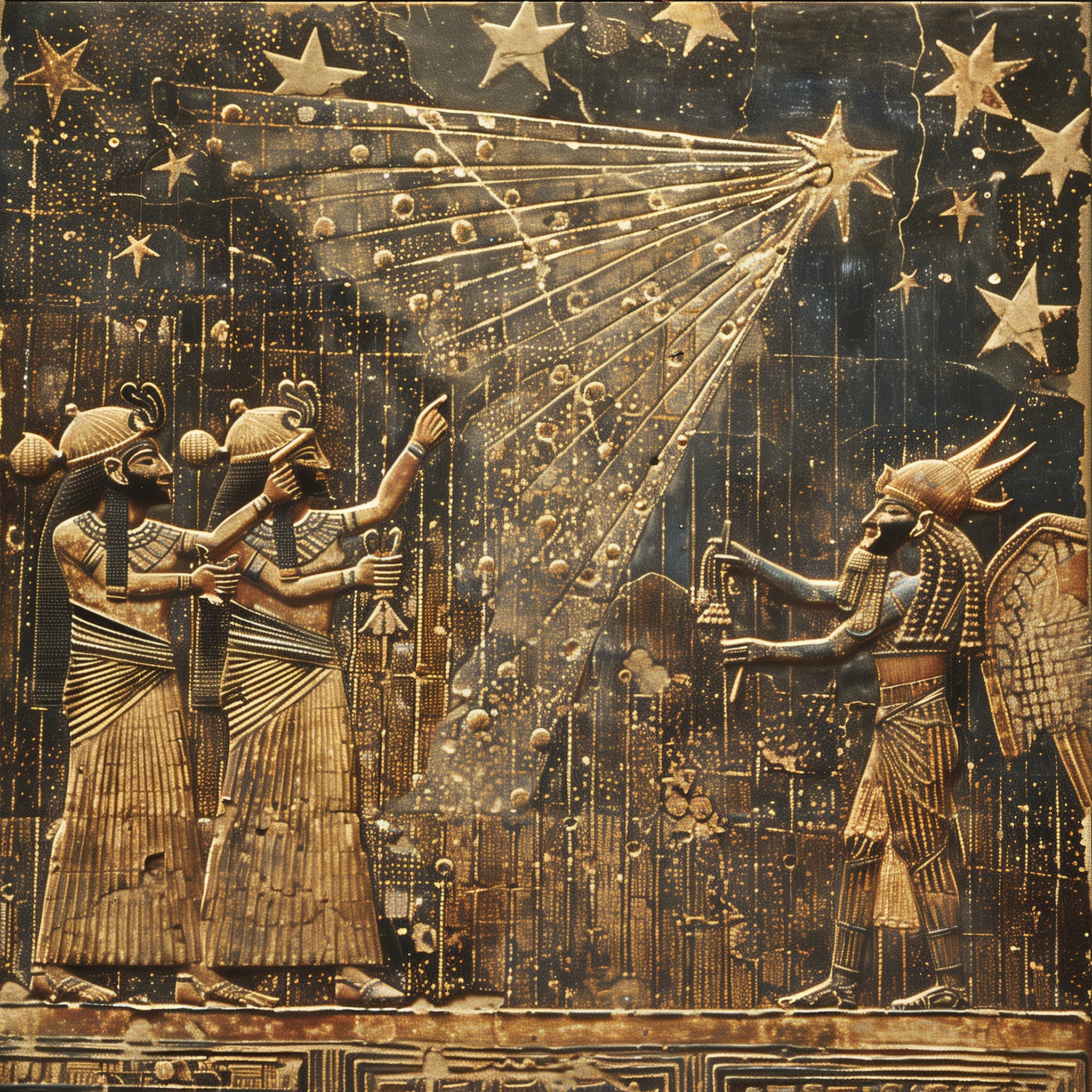Activating the Territory – Part 5 of the Chemistry of Time
For those who have never before strayed from the city lights the first encounter with the unadulterated night sky can be revelatory. What until that time had been a mere scattering of dimly lit points mixed with flashing indicator lights of airplanes, helicopters, and tall buildings has suddenly transformed into an explosion of beams, colors, dots, and shapes. It is a profoundly different experience and one that helps illustrate the heightened interest in the terrain of the sky among ancient peoples as compared to today. For us the profound Sun and prominent Moon still exist but the rest have become a backdrop less prominent than a gas station sign or a highway billboard. Our inability to see begets our lack of curiosity which begets our lack of understanding. Our commensurate lack of information begets our lack of knowledge, which begets our lack of wisdom. Our lack of wisdom begets our foolish appearance when we deny outright the utility of the night sky and the objects contained therein for interpreting our world. Fortunately, it has not always been so.
Beyond the enormous bright Sun of the daytime sky is the spectacular, ever-changing bright Moon of the night sky. The correlation of the Sun’s position to the changing climate each year is obvious. The fact of the Moon’s changing position, shape, and brightness is similarly obvious – to an extent that every civilization we know of kept an eye on these cycles and most, if not all, found meaningful correspondence in it. The short duration (29.5 days) of the Moon’s cycle makes it easy for even a single individual to watch it through enough complete periods to notice any patterns and this persists through the present day. We regularly forecast the tidal levels based upon the position of the moon and every police officer and emergency room nurse in America can confirm that the Full Moon will always produce a busier night than normal. Our languages contain references to this knowledge, such as labeling those behaving strangely as “lunatics” after the Latin name for the Moon, and our culture is littered with references to the phases of the Moon to the point of being a comical cliche. It is for this reason that the Moon is regarded alongside the Sun as one of the “Luminaries” in the astrological system.
The luminaries are what they sound like – the sources of light. The fact that the Moon is reflecting the Sun’s light rather than generating it for itself is both unimportant to this classification (however convoluted the path the light still gets here) and also deeply important to how the Moon acts upon the times. In Astrology the Sun and the Moon are both considered “planets,” but with a special status of “luminaries” which we will discuss at length later. Beyond them there is the matter of the other five planets, classically know as the “wandering” stars.
The wandering stars are the other objects in the sky which can be seen to move, along with the Sun and the Moon. The rest of the backdrop of stars and galaxies is a seemingly fixed display and as such these ones stood out pretty quickly. If the positions of the Sun and the Moon show patterns about what happens in our world what about these other, smaller lights in the sky? They do, and in a more fascinating way than you probably expect. For those who flunked primary school, let’s review:
The Sun
The Moon
Mercury
Venus
Mars
Jupiter
Saturn
Each of these objects make a regular rotation through our sky with predictable and measurable orbits that have been tracked since the beginning of recorded history. In this way they are fundamentally the same and that is why they are categorized as the same kind of base element. What they do is move against the fixed territory of the sky and against each other, moving in and out of positions near or in “angle” to each other. What Astrology tells us is that these \”planets” tell us about the times in the same way that the Sun does, they just tell us different things.
The planets are what we will call “active elements,” in contrast to the territorial elements that are the zodiacal signs. The planets are the seven base elements that actively combine with each other and the territory to form time. The nature of the time being formed is determined by the combination of the planets at the given moment, measured by location and relationship with each other. All planets are present at all times, so the times consist of those planets always. Comparing to the Chemistry model we could say that what changes is their quantity, state, and bond strength with each other. In Astrology, the terms applied to these same relationships are “dignity” and “aspect.”
Understanding how to interpret the planetary positions is about understanding the nature of each of these planets, how they respond to being in a certain place, and how they respond to being with the other planets. They are seven very different elements which combine together in ever-changing combinations to produce the times. The core task of the system of astrology is to measure and weight their relative state of being and their influences against each other, and this is done using a set of defined and consistent rules and procedures. The number of possible outcomes of these combinations is essentially infinite, as might be expected given the nature of what they are said to be doing. As such the act of measuring these combinations precisely is often extraordinarily tricky to accomplish, like chasing wandering stars against a sea of infinite lights in the night-time sky overhead. Fortunately, an incomplete understanding of their total combinations is more than sufficient to derive value, meaning, and actionable data about a given time.


Leave a Reply